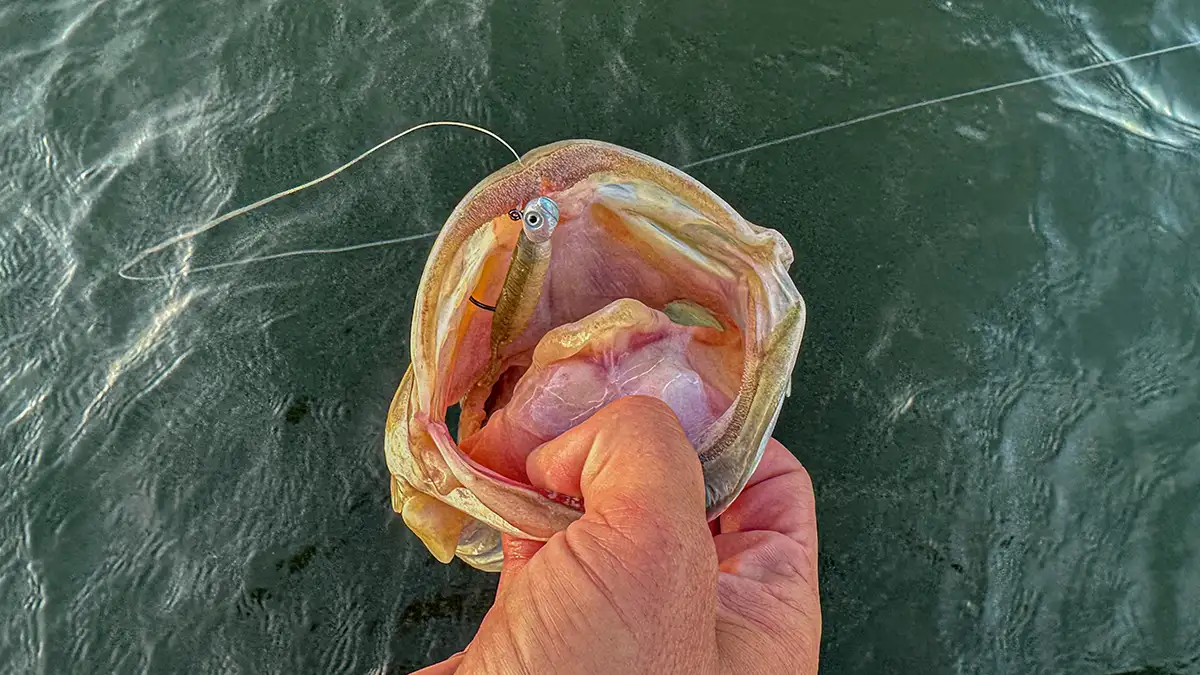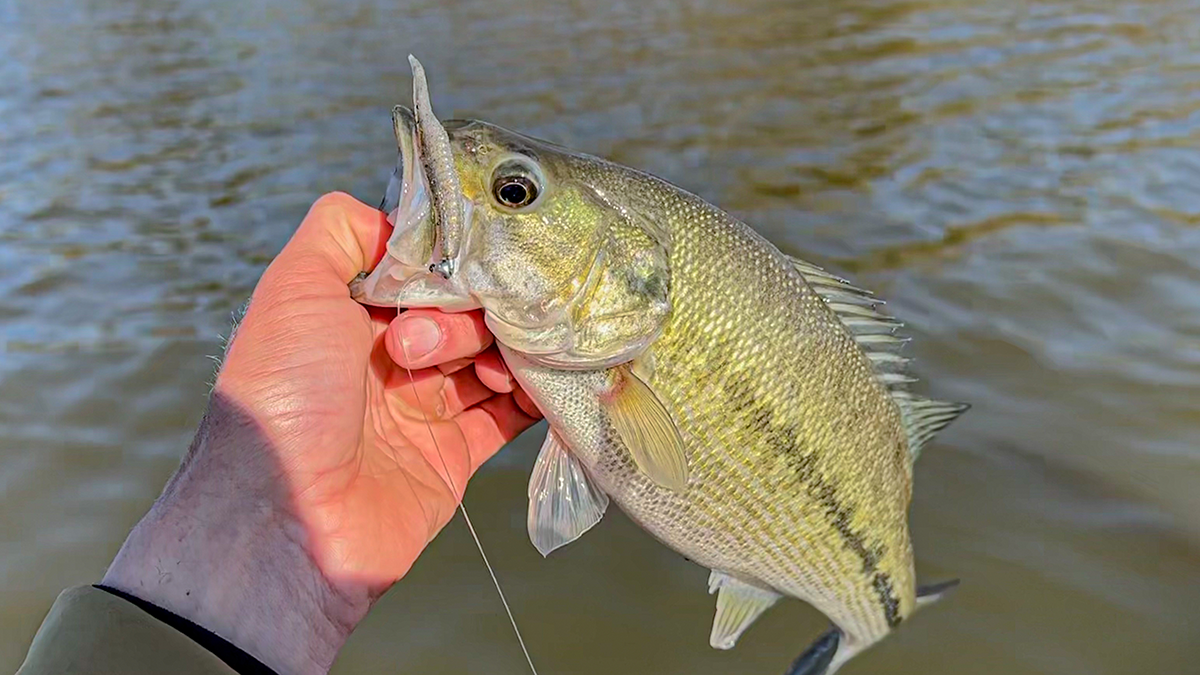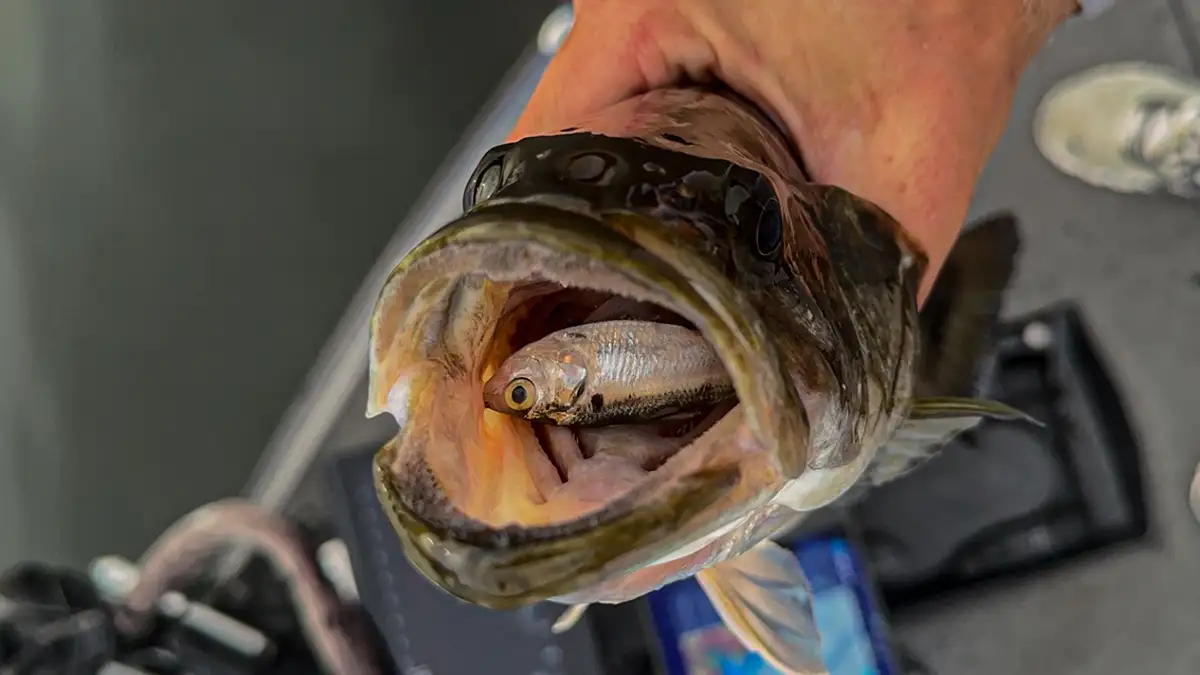Warning: Undefined variable $k in /home/nginx/domains/wired2fishcom.bigscoots-staging.com/public/wp-content/themes/understrap-child-0.6.0/functions.php on line 984
Warning: Undefined variable $k in /home/nginx/domains/wired2fishcom.bigscoots-staging.com/public/wp-content/themes/understrap-child-0.6.0/functions.php on line 987
If you pay attention to bass fishing culture, its no secret that a jig and minnow is all the rave. This rig consists of a spinning rod, light line and a soft plastic minnow rigged on a lightweight jig head. This rig initially gained popularity due to its success rate targeting suspended fish. Many anglers found success using this rig in the fall and winter to target suspending fish that are feeding on balls of bait. While this is undoubtedly a great scenario for a jig and minnow, this rig is extremely versatile and can be used basically year round. Most anglers think that a jig and minnow is only productive in the winter, however we’re here to tell you why you should fish a jig and minnow throughout the summer as well.

WHY YOU SHOULD THROW A JIG AND MINNOW
No matter what fishery you’re on in the country, bass are feeding on baitfish. This is a universal food group found on nearly ever body of water, and one of the easiest way to imitate this type of forage is with a jig and minnow. You can target fish at any depth range with this presentation, and it’s a great finesse tactic for targeting heavily pressured fish. I started off using this technique to target groups of suspending spotted bass feeding on bait balls. This pattern typically occurs throughout the fall and winter, however I’ve slowly gained more confidence with this technique and have begun experimenting with it in other scenarios.
Summer has quickly become one of my favorite times to throw a jig in minnow. This is largely because the majority of fish move offshore this time of year due to an increase in water temperature. As these fish move offshore to either ledges, brush or other types of structure, their main forage is primarily shad. While these fish position themselves differently compared to the winter months, they are still more than willing to eat a jig and minnow. This is especially true given the increase in fishing pressure that occurs throughout the summer. This can often make fishing much tougher, causing fish to stay away from traditional shad imitations such as a jerkbait or crankbait. This is one of my favorite times to pick up a jig and minnow and go to work.
BOTTOM STROLLING
Bottom Strolling refers to fishing a jig and minnow near the bottom of the water column. Throughout the winter and fall fish tend to suspend at all depths in the water column searching for bait. As water temperatures warm it pushes this bait down deep in the water column, causing the majority of fish to stay close to the bottom this time of year. This typically results in large groups of bass commonly referred to as “schools”. These schools typically congregate on deep points, humps and ledges, often related to the current. Bass use these locations as ambush points to attack shad and other types of forage that get washed by in the current.
This is one of my favorite places to throw a jig and minnow as you can often catch tons of fish in one location. The technique of bottom strolling is perfect for this scenario as the bass are often positioned right along the bottom. Many anglers use traditional baits such as a magnum crankbait, jig and spoon when targeting schools. While these techniques undoubtably work, you typically only catch a few fish before they wise up to your presentation. One of the best way’s to really maximize a school of bass is by throwing a finesse presentation such as a jig and minnow. Upsizing your minnow in this scenario is another great way to generate bites from some of the bigger fish in the school. I often use a Duo Realis Versa Pintail or a Z-Man Scented Jerk Shad.

MID STROLLING
Mid Strolling is another productive technique for fishing a jig and minnow throughout the summertime. This technique refers to fishing a jig and minnow in the middle of the water column, and its the perfect approach for targeting fish in brush piles and timber. I’ve caught both spotted and largemouth bass using this technique, and its a great finesse application for catching pressured fish. The further we get into summer the more fish move offshore. Rising water temperatures tend to force fish off the bank and down to deep brush, timber and other types of cover. These fish typically receive less pressure as they aren’t grouped up in huge numbers like a traditional summertime school.
Picking these fish off using a jig and minnow in conjunction with forward facing sonar is a super effective way to catch a big limit of bass. I generally fish this scenario by looking for individual fish on my forward facing sonar unit, then try and bring the minnow right over the fish without snagging any cover. This is often easier said than done depending on the level of brush present, and choosing the right sized head can make all the difference. I prefer a lighter head in these scenarios as it allows to bait to float above the brush without quickly passing by. This gives bass more time to key in on your bait as well helps keep your bait out of brush. My go-to jig head for fishing around brush is the Queen Tackle Live Sonar Tungsten Jig Head.

HOVER STROLLING
Hover strolling is the third and final way I fish my jig and minnow throughout the summer. This technique involves a super light head, and keeping your bait just below the surface of the water. This is the perfect finesse presentation for imitating fleeing baitfish if clear water scenarios. This is one of my favorite ways to target schooling fish throughout the summer months. If you’ve ever targeted schooling fish with a topwater before, you know they have a habit of either missing the bait entirely or just not getting hooked. Throwing a small sub surface minnow is a presentation these fish aren’t used to seeing, which typically leads to a few more bites.
Another reason I like throwing the jig and minnow for schooling fish is the landing ratio. Schooling fish are prone to jumping and putting on a show once you have them hooked. These fish don’t show themselves for long, and untangling a clumsy treble hook bait often means you missed your chance. Furthermore, traditional treble hook topwater baits are known for coming unpegged in these scenarios. A single hook jig head is far more consistent with getting these bass to the boat due to its overall efficiency and a strong single hook paired with a lightweight head.
Its no secret that the jig and minnow has grown in popularity, however only a small faction of anglers are using it outside of its traditional uses. This is an extremely versatile bait that can be used throughout all four seasons of the year, and it just so happens that now is one of the best times to use it. If your having trouble getting fish to bite on your traditional summer techniques, throwing a jig and minnow might just be your answer.












